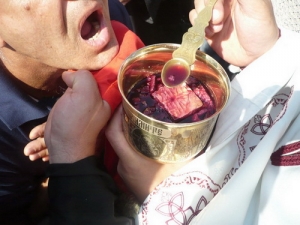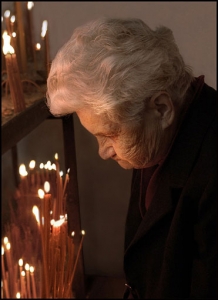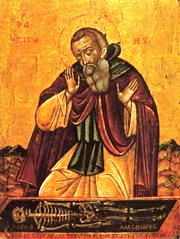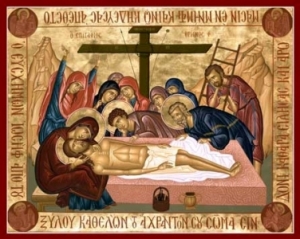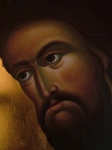the-bible-and-the-church Attached is a beginning of a series on the Bible and the Church. You must use Quick Time movie viewer. This is a FREE download go to http://www.apple.com/quicktime/download/. Follow the instructions. To advance the images on the movie just please your curser on the image and click. To advance each slide please place cursor on slide and click. Thank You! I hope you enjoy this first class and more will follow! Please send me your comments. gpb]]>
“With Fear of God with Faith and Love… ”

During the Divine Liturgy we are called to partake of Christ with the “Fear of God, Faith and Love… ” The fear of God is not the type of fear that means we are petrified and so terrified of God that we quake and live in horror; instead this “fear” is awe, reverence and veneration. We know the holiness of God as Trinity and our separation from Him caused by our own sinfulness. This awe requires us to look at ourselves honestly and to understand the great gulf between us and Our Lord. But, there is more to the invitation to the Chalice than fear. There are two more phrases that we need to consider.
With faith! How can we approach God without faith? We understand the great gulf between us, but faith can overcome this separation. Faith in the Incarnation of Jesus Christ, Our Lord becoming one of us; truly God and truly Man. His love for His Creation is so great that He put on our humanity through the Theotokos by the Holy Spirit to allow us to relate to Him. He assumed our nature to decrease the separation between us. This mystery is beyond our understanding. The result of His love for us is to lessen the “fear” we have for Him. How can we fear one of our own? Can we live in dread of someone who is there waiting for us to reach out so that His strength supports us in our weakness? With faith, we are certain that he is the gentle shepherd who will search us out when we’re lost and carry us on His shoulders when we’re too tired to walk to Him. This faith is a faith in God’s love for us. This faith is an assurance of Christ’s continued presence among us, His People.
When we realise Christ is there in the Chalice waiting for us, there is only one response – Love. Love for God, a burning desire for Him to be the centre of our life. By the invitation of the Church, we are called to partake and become one with Him. Not only are we summoned to join with Christ, but also to become one with all who share in this Cup. This is true love, to become part of each other. Christ became one of us and shared our nature because of His love. By sharing Him, we share each other. It is a miracle of His love that we enter into an intimate relationship with each other as a community. As we partake of Holy Communion “with the fear of God, Faith and Love,” not only do we draw near to Christ; but equally to each other. The closeness of this bond is the unity that makes us the Body of Christ with one head – Our Lord God and Saviour, Jesus Christ. Answer the invitation! Let us meet Christ and each other at His Cup of Love. ]]>DISTANCE
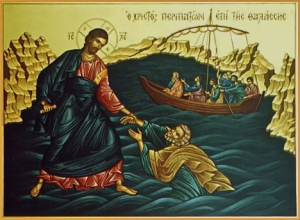
What do you do when you lose faith? How do we move from that abstract question to the reality of life? Frankly, I don’t have all the answers. Sometimes I am full of questions, many of which don’t have easy solutions. There is a distance between God and us that at times seems to grow even further. Yet, we are assured God is always available, awaiting us. It would seem, we’re the ones who move away from God. For me this is very problematic. When life deals you difficulties; whether illness, the death of a loved one or as in my case unemployment your faith is tested and you don’t know why. The Church tells us we should trust in God and surrender to His will. For me this is very hard. Trust is one thing, but knowing His will for your life is sometimes very confusing. We are told not to fear, this is extremely hard to do when your life seems to be in such turmoil and you make choices that appear to be the correct ones only to turn out poorly. How do we know God’s will for our life? There are so many examples of faith in the scriptures, but how do we get from doubt to certainty. One of my problems is that I can relate to the theoretical, I can quote chapter and verse and I usually know the right things to say. But, the application to life, is a struggle. Like most of us, I want to have faith and to be confident in that faith. Why to we question our own heart and create such a turmoil in our spirit? Seeking God is our natural state, yet we make it so hard. I try to find answers for these questions in Scriptures or in the Lives of the Saints. As I mull over these thoughts, I am sure that I am not the only person to have asked these questions. As I have tried to search out a path, I have found that the Church talks of two types of faith. The first is based on knowledge, understanding and leads to quiet and complete trust in God. This level of faith is the higher faith for which we all yearn. Perhaps, the first step of faith is realising that we all question. I believe that prayer is a powerful weapon, so I ask for your prayers. I will pray that God strengthens our faith and gives us insight and understanding which leads to an unshakeable faith.
Lord Jesus Christ Son of God Have Mercy on Me a Sinner.
]]>
